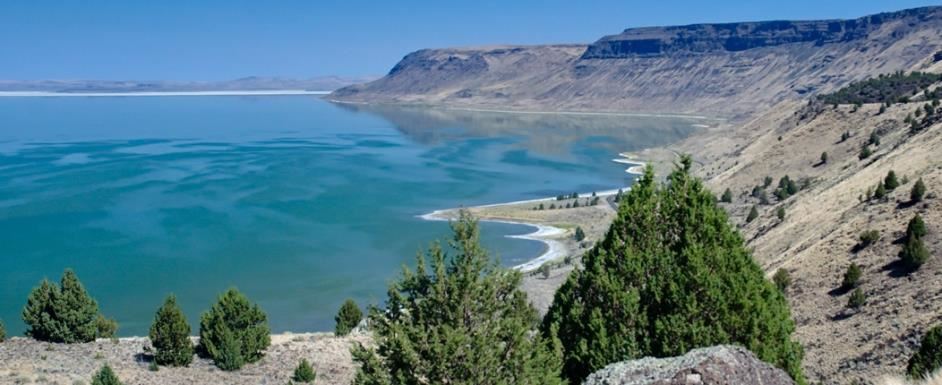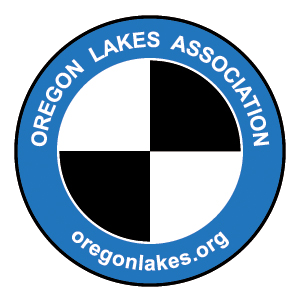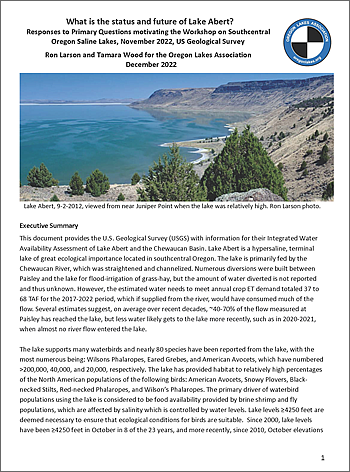| Oregon Lakes Association ....a voice for quiet waters. |
Lake Abert, Oregon

On-line conference recorded Monday, January 23
Sponsored by Oregon State University & Oregon Lakes Association
TIME INDEX
Theo Dreher, Oregon State University & Oregon Lakes Association: Introduction, 0:00
Ron Larson, OLA, formerly US-Fisheries & Wildlife Service: An Introduction to the Recent Ecology, Hydrology and Conservation Status of Lake Abert, 5:35
Susan Haig, Oregon State University, formerly US Geological Survey: Bird dependency on Lake Abert and nearby wetlands, 27:35
Stan & Nathan Senner, formerly National Audubon Society & University of Massachusetts: Saline lakes and the birds that depend on them in the Pacific Flyway, 51:25
David Herbst, University of California Sierra Nevada Aquatic Research Laboratory: Invertebrate productivity in hypersaline lakes, 1:13:45
Larry O’Neill, Oregon State University & Oregon State Climatologist: Climate predictions for SE Oregon and future scenarios for the Chewaucan Watershed, 1:45:55
Erica Fleishman, Oregon State University & Oregon Climate Change Research Institute: Ecological responses to climate change in the northwestern Great Basin, 2:07:35
Adam Hudson, US Geological Survey, Denver: Paleoclimate effects on tui chub populations and lake levels in the Chewaucan basin for the past 15,000 years, 2:25:25
Discussion, 2:50:00
Prior Publications
Responses to Primary Questions motivating the Workshop on Southcentral Oregon Saline Lakes, November 2022, US Geological Survey Ron Larson and Tamara Wood for the Oregon Lakes Association December 2022 Erratum: the January 2023 version of this document corrects a previous error in Fig. 13 (2015 lake levels) December 2022 Summary: Recommendations/Findings
Policies and Proposals |

